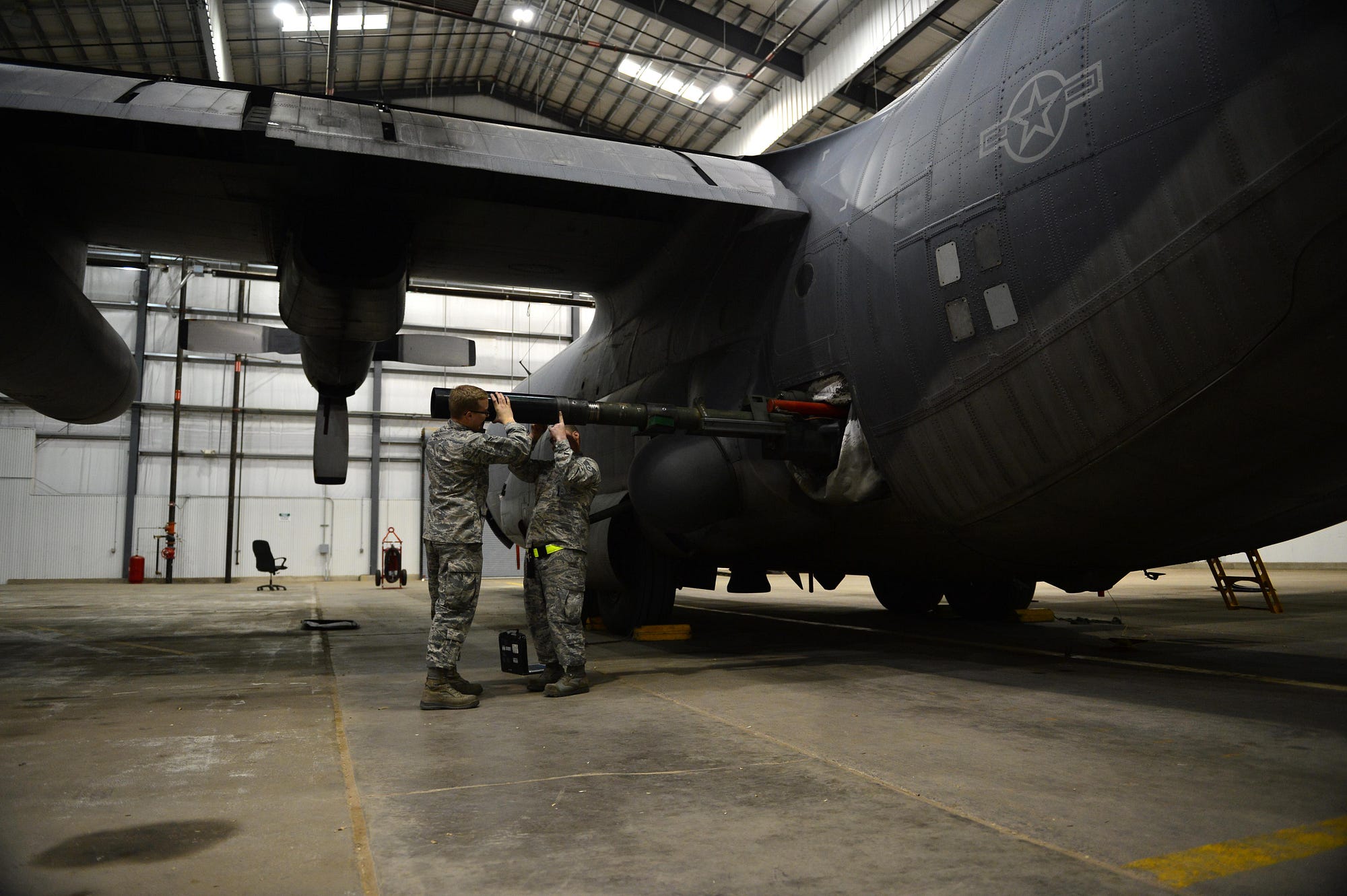JOSEPH TREVITHICK
U.S. Special Operations Command is asking for money to build a secret hangar at an undisclosed location somewhere in the United States. The shelter could house some of the command’s special planes or drones … or something else entirely.
Funds for the facility are in the Pentagon’s recent budget request, tucked inside a section reserved for construction projects involving U.S. Special Operations Command. The $20-million project also includes money for a paved taxiway and an “inspection and test shop.”
The Air Force’s commando headquarters says it needs the site by 2018 in order to inspect and test … something. The budget entry says very little about the new facility’s actual purpose.
But we can guess. After all, Air Force Special Operations Command possesses an amazingly diverse fleet of airplanes including AC-130 gunships, speedy CV-22 tiltrotors, deadly MQ-9 Reaper drones, small U-28A spy planes and secretive Cessna Caravan transports.
The hangar request has a code number corresponding with Pentagon construction regulations. But cross-referencing this number doesn’t reveal any specifics—except that the proposed structure falls under the general category of inspections and maintenance.
SOCOM doesn’t even state where the new hangar would be. Its location is listed as “CONUS classified,” meaning it would be somewhere in the continental United States.
 Above—airmen work on an AC-130H gunship’s 105-millimeter howitzer inside a hangar at Cannon Air Force Base. At top—an MQ-9 under a shelter in Iraq in 2010. Air Force photos
Above—airmen work on an AC-130H gunship’s 105-millimeter howitzer inside a hangar at Cannon Air Force Base. At top—an MQ-9 under a shelter in Iraq in 2010. Air Force photos
But the overview isn’t totally bereft of details. At more than 36,000 square feet, the shelter is definitely big—although not the Pentagon’s largest hangar. In 2005, contractors built a 51,000-square-foot hangar at Andersen Air Force Base in Guam.
That maintenance structure—known as Hangar 1—had to be big so that the Air Force’s massive B-2 and B-52 bombers could fit inside during typhoons.
The Guam hangar can also hold smaller planes such as the F-22 stealth fighter, contractor Burns & McDonnell states on its Website. Sometime in the last six years, a top-secret RQ-170 Sentinel drone also posed near the massive building.
But we probably shouldn’t read too much into the secret hangar’s size. “As to hangar size … it’s all going to be aircraft specific,” explains Brian Laslie, an Air Force historian, referring to aircraft shelters in general. “It’s more of a maintenance requirement than anything else.”
The request doesn’t mention a new runway, which means the structure will likely end up at an existing air base. “That would have to be Florida,” says John Pike, director of the military information website GlobalSecurity.org. “There’s where SOCOM lives.”
The Pentagon’s commando headquarters is at MacDill Air Force Base near Tampa.
Another possibility is Tonopah Test Range in Nevada. Most observors associate that secure facility with secretive aircraft such as the stealthy Sentinel and the old F-117 stealth fighter.
If Congress approves the funds and Special Operations Command builds the new hangar, commandos could use the structure to help out with “overseas contingency operations, as required,” according to the project description.
“It could be Reapers,” Pike posits. The Air Force wants to buy 29 more of these deadly drones, according to the recent budget request.
Air Combat Command—which controls the bulk of the Air Force’s fighter jets, spy planes and drones—wants to acquire as many as 400 MQ-9s, according a recent review of the program. Aerial commandos could be in the process of consolidating their own smaller fleet of the propeller-driven unmanned aerial vehicles.
“Or it could be one of the stealthy UAVs we don’t know about,” Pike notes.
In June 2014, the Air Force admitted it was working on a new, super-secret pilotless spy plane called the RQ-180. Then the following January, the Pentagon announced plans for another experimental aircraft.
“The Defense Advanced Research Projects Agency initially will lead the program,” Under Secretary of Defense for Acquisition, Technology and Logistics Frank Kendall told legislators on Jan. 28.
 An MQ-9 Reaper, at right, and an MQ-1 Predator, at left, inside a hangar at Holloman Air Force Base. Air Force photo
An MQ-9 Reaper, at right, and an MQ-1 Predator, at left, inside a hangar at Holloman Air Force Base. Air Force photo
But this “Aerospace Innovation Initiative” is part of the Pentagon’s burgeoning effort to develop a fighter jet to follow the vexing and troublesome F-35. “This will lead to the systems that ultimately will come after the F-35,” Kendall said.
In any event, Pike says the bevy of new public warplane developments is reason to suspect a simultaneous surge in secret projects. If the Air Force is openly talking about unclassified new planes, then there’s likely a corresponding trend involving classified ones, as well.
“You have to imagine that if there has been such an amazing outburst of programmatic creativity in the unclassified world, that there would have been at least as much friskiness on the classified side of the house,” Pike explains.
Since the money for the hangar would come from SOCOM, the structure could shelter aircraft from any of the military branches, all of which operate planes and helicopters on the command’s behalf. For one, the Army’s commandos fly special helicopters configured with advanced composites that make them difficult to spot on radar.
In 2011, photographs emerged showing the tail of a classified stealth rotocraft that crashed during the raid on Osama Bin Laden’s compound in Pakistan.
The helicopter was likely a heavily modified MH-60 Blackhawk. The Pentagon has not revealed details of any kind nor any official pictures of the aircraft.
The proposed new hangar “could be where the stealth helicopter would live,” Pike says. “That keeps flickering in and out of reality.”
Of course, the special operations community is prone to secrecy, even in regards to mundane activities. So maybe the big secret hangar will end up housing regular old airplanes. Who knows.
No comments:
Post a Comment